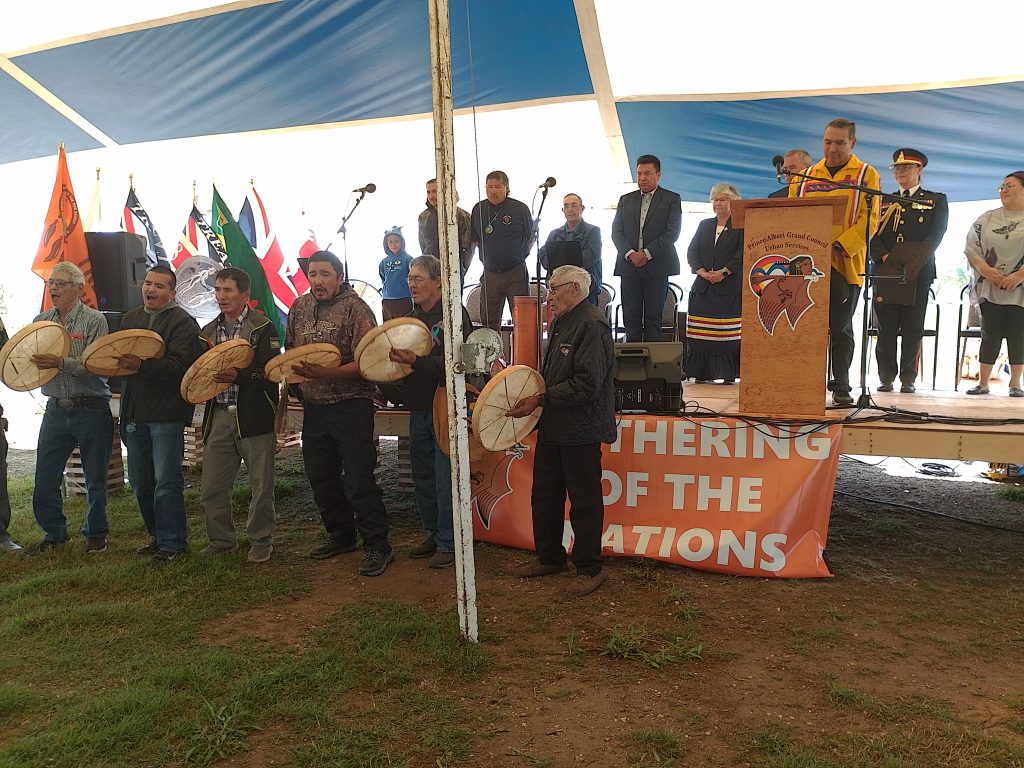![{"capture_mode":"AutoModule","faces":[]}](https://paherald.sk.ca/wp-content/uploads/2024/08/DA-A02-Treaty-Signs-696x522.jpg)
The Lieutenant Governor of Saskatchewan, Russell Mirasty has said that treaties are formal agreements negotiated between the Crown and First Nations and they are real.
Now, Prince Albert and area residents will have a regular reminder of their importance thanks to a series of new highway signs marking the boundaries of Treaty Six. Mirasty was on hand with dignitaries from the provincial government, PAGC, and Office of the Treaty Commissioner for the unveiling on Tuesday.
“The treaties, as we know them in Canada, were agreed upon by the people of this land. so, when we come to an agreement about something through treaty, it means that we are all part of that, whether two or more of it has to be more than one and one entity,” Mirasty said.
“(It is) an important step to furthering that awareness of the treaties,” he added.
Each of the signs incorporates Indigenous languages specific to their locations. Some also include the phrase that represents the spirit and intent of the treaties, “as long as the sun shines, grass grows, and rivers flow.”
“These official highway signs will help to illustrate that we are all Treaty people and will hopefully lead to further questions and conversations about the importance of the treaties and their significance to Indigenous people not just from Saskatchewan, but across Western Canada.” said Mirasty.
These are the last official treaty highway signs unveiled in Saskatchewan. The first ones were installed on Hwy 11 between Saskatoon and Regina two years ago to mark the Treaty 4 and Treaty 6 boundary.

“It started with one pair of signs and now across Saskatchewan, people will be able to see when they are crossing a Treaty boundary, that has been here longer than the creation of the province,” said Angie Merasty, the executive director of the Office of the Treaty Commissioner.
“We are so pleased to have had the support of our Elders Treaty Council to ensure we are honouring Treaty from north to south. We hope that drivers on these highways use these reminders to further their own reconciliation journey.”
Mirasty said learning about the treaties is an important educational step for young people. He said introducing students to the treaties early in life helps them mature and be more accepting.
“It is one pathway to reconciliation and broader understanding of who we all are,” he said.
This project has been an ongoing in the last three to five years in a partnership between the Saskatchewan government, which is government relations, and government Ministry of highways and the office of the treaty commissioner.
The four pairs of signs will be put up in the future along: Highway 2 north of Prince Albert to mark the Treaty 6 / Treaty 6A Boundary, Highway 102 / 905 southeast of Southend to mark the Treaty 6A / Treaty 10 Boundary, Highway 55 east of Nipawin to mark the Treaty 5 / Treaty 6 Boundary and Highway 955 north of La Loche to mark the Treaty 8 / Treaty 10 Boundary.
These additional signs contribute to greater Treaty awareness, which is important as we all move forward on our journey of reconciliation,” Minister Responsible for First Nations, Métis and Northern Affairs, Don McMorris said. “(It) helps us ensure that the province is moving forward in partnership with First Nation people.”
Every number treaty in Saskatchewan will be acknowledged with an official Highway sign in the ancestral language of the communities.
editorial@paherald.sk.ca

